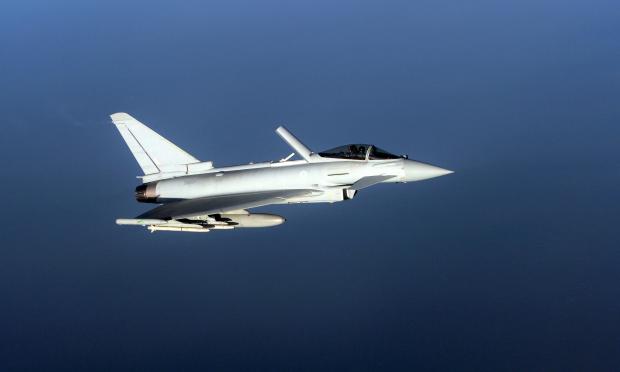A Russian pilot allegedly tried to shoot down a British spy plane as he misinterpreted an order, the BBC reports.
Specifically, the pilot fired two missiles, the first of which missed instead of showing a technical malfunction, as Russia claimed last September. The UK Ministry of Defence then publicly accepted the Russian explanation.
But according to three senior Western military sources cited by the British media, Russian communications intercepted by the RAF's RC-135 Rivet Joint aircraft provide a different explanation from the official version.
The RAF aircraft - with a crew of up to 30 - was carrying out a "surveillance" mission over the Black Sea in international airspace on 29 September last year when it encountered two Russian SU-27 fighters.
Intercepted communications show that one of the Russian pilots thought he had been given permission to target the British aircraft after receiving an ambiguous order from a Russian ground station. However, the second pilot did not believe it. He protested to his partner when he fired the first missile.
The Rivet Joint is loaded with sensors to intercept communications. The RAF crew would have been able to hear the incident which could have resulted in their deaths.
Responding to the new reports a British Ministry of Defence spokesman said: "Our intention has always been to protect the safety of our operations, avoid unnecessary escalation and keep the public and the international community informed."
As the two Russian SU-27s approached the RAF spy plane, they were contacted by their ground station controller. A Western source told the BBC that the words they received were along the lines of "you have the target".
This ambiguous language was interpreted by one of the Russian pilots as permission to fire. The loose language appeared to indicate a high degree of unprofessionalism by those involved, the sources said.
The Russian pilot released an air-to-air missile, which was successfully launched but failed to lock on to its target, the BBC was told. It was a failure, not a malfunction.
Defence sources told the BBC that a fight then broke out between the two Russian pilots. The pilot of the second SU-27 felt he had not been given permission to fire.
He is said to have sworn at his partner, asking him essentially what he thought he was doing. However, the first pilot fired another missile.
We were told that the second missile simply fell off the wing - suggesting that the weapon either malfunctioned or that the launch was aborted.
Three weeks later, the UK government confirmed that the incident had taken place following an explanation from the Russian Ministry of Defence that referred to a "technical malfunction". In a statement to MPs on 20 October, then Defence Secretary Ben Wallace referred to a "potentially dangerous engagement".
However, he accepted the Russian explanation, saying that "we do not consider this incident to be a deliberate escalation by the Russians and our analysis agrees that it was due to a malfunction".
However, leaked intelligence has revealed that the US military has spoken about what happened in harsher terms. In a series of documents posted online by US aviator Jack Teixera, the same incident was described as a "near miss".
"The incident was far more serious than originally presented and could amount to an act of war," the New York Times reported.
According to two U.S. defense officials, the paper said, the Russian pilot had misinterpreted an order from the ground and "had locked on to the British aircraft, fired, but the missile was not fired properly."
The newspaper also quotes an unnamed US defence official who described the incident as "really, really scary".
In response to the leaked report of a "near miss", the British Ministry of Defence issued another statement that further confused the situation.
The MoD claimed that a "significant proportion of the content of these reports [from the documents] is untrue, misrepresented or both."



